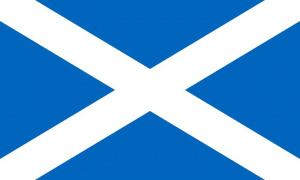Difference between revisions of "Language/Scottish-gaelic/Grammar/Conditional-Mood"
m (Quick edit) |
m (Quick edit) |
||
| Line 47: | Line 47: | ||
<hr>If you have any questions, please ask them in the comments section below.<br>Feel free to edit this wiki page if you think it can be improved. 😎 | <hr>If you have any questions, please ask them in the comments section below.<br>Feel free to edit this wiki page if you think it can be improved. 😎 | ||
==Related Lessons== | ==Related Lessons== | ||
* [[Language/Scottish-gaelic/Grammar/Personal-pronouns|Personal pronouns]] | |||
* [[Language/Scottish-gaelic/Grammar/How-to-Use-Be|How to Use Be]] | |||
* [[Language/Scottish-gaelic/Grammar/Future-Tense|Future Tense]] | |||
* [[Language/Scottish-gaelic/Grammar/How-to-Use-Have|How to Use Have]] | |||
* [[Language/Scottish-gaelic/Grammar/Adjectives|Adjectives]] | * [[Language/Scottish-gaelic/Grammar/Adjectives|Adjectives]] | ||
* [[Language/Scottish-gaelic/Grammar/ | * [[Language/Scottish-gaelic/Grammar/Give-your-Opinion|Give your Opinion]] | ||
* [[Language/Scottish-gaelic/Grammar/Questions|Questions]] | |||
* [[Language/Scottish-gaelic/Grammar/Pronouns|Pronouns]] | |||
* [[Language/Scottish-gaelic/Grammar/Negation|Negation]] | * [[Language/Scottish-gaelic/Grammar/Negation|Negation]] | ||
{{Scottish-gaelic-Page-Bottom}} | {{Scottish-gaelic-Page-Bottom}} | ||
Revision as of 12:33, 6 March 2023
Hi Scottish Gaelic learners! 😊
In today's lesson, we will be exploring the conditional mood in Scottish Gaelic. The conditional mood is used to express hypothetical situations or events that may or may not happen in the future. It is an important part of the language and can help you express yourself more accurately and precisely.
Overview
The conditional mood is formed by adding certain endings to the verb stem. The endings depend on the person and number of the subject. In this lesson, we will look at the different endings and how they are used.
Person and Number
The endings for the conditional mood depend on the person and number of the subject. The endings are as follows:
- First person singular: -ainn
- Second person singular: -eis
- Third person singular: -eadh
- First person plural: -eam
- Second person plural: -eabh
- Third person plural: -eadh
For example, the verb "to speak" (can) has the following forms in the conditional mood:
- First person singular: canainn
- Second person singular: caneis
- Third person singular: caneadh
- First person plural: caneam
- Second person plural: caneabh
- Third person plural: caneadh
Usage
The conditional mood is used to express hypothetical situations or events that may or may not happen in the future. For example:
- If I had more time, I would go to the beach. (First person singular)
- If you had more money, you would buy a car. (Second person singular)
- If he had more energy, he would go running. (Third person singular)
- If we had more money, we would go on holiday. (First person plural)
- If you had more time, you would go to the cinema. (Second person plural)
- If they had more energy, they would go hiking. (Third person plural)
It can also be used to express wishes or desires. For example:
- I wish I had more time. (First person singular)
- You wish you had more money. (Second person singular)
- He wishes he had more energy. (Third person singular)
- We wish we had more money. (First person plural)
- You wish you had more time. (Second person plural)
- They wish they had more energy. (Third person plural)
If you have any questions, please ask them in the comments section below.
Feel free to edit this wiki page if you think it can be improved. 😎
Related Lessons
- Personal pronouns
- How to Use Be
- Future Tense
- How to Use Have
- Adjectives
- Give your Opinion
- Questions
- Pronouns
- Negation
